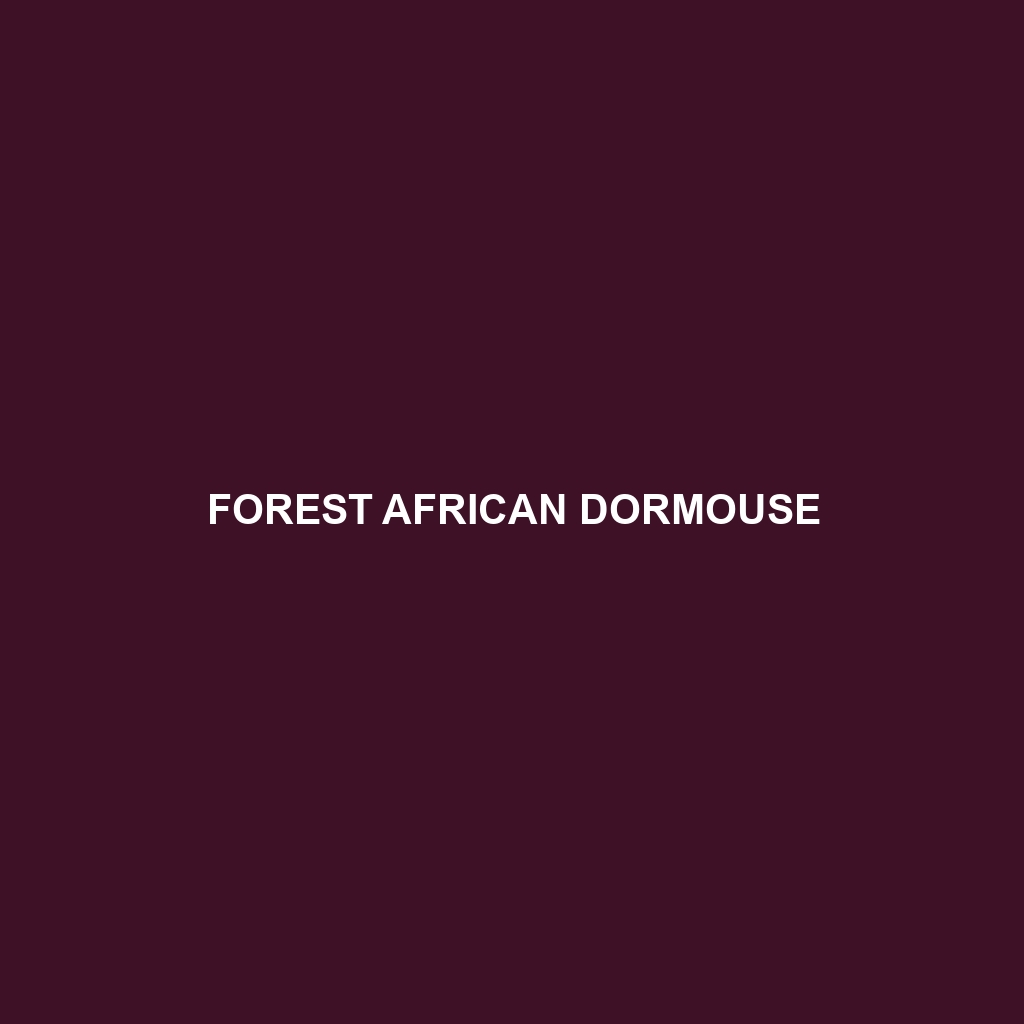Forest African Dormouse
Common Name: Forest African Dormouse
Scientific Name: Graphiurus murinus
Habitat
The Forest African Dormouse is primarily found in the dense forests and woodlands of Central and West Africa. Its natural habitat spans across countries such as Cameroon, Gabon, and the Republic of the Congo. This species thrives in moist, tropical environments where it can easily navigate the underbrush and canopy.
Physical Characteristics
The Forest African Dormouse typically measures about 10 to 15 centimeters (4 to 6 inches) in body length, with an additional tail length of approximately 8 to 12 centimeters (3 to 5 inches). This small rodent has a soft, thick fur that is characterized by a distinctive olive-brown coloration on the back, while the underside shows a cream to grey hue. Its large, expressive eyes and bushy tail are notable features, enhancing its charm and visibility within its habitat.
Behavior
Known for its nocturnal habits, the Forest African Dormouse is primarily active during the night. This species exhibits arboreal behaviors, often found foraging among the branches and leaves. Their agile climbing abilities allow them to escape predators and search for food. They are also known for their social structure, often living in small family groups, which promotes cooperation in nesting and feeding.
Diet
The diet of the Forest African Dormouse consists mainly of fruits, nuts, and seeds, making it an important seed disperser in its ecosystem. Additionally, they may consume insects and small invertebrates, especially during breeding seasons when additional protein is beneficial. Their feeding habits significantly impact the forest ecology by aiding in the growth of various plant species.
Reproduction
Reproduction in the Forest African Dormouse typically occurs during the rainy season, which provides ample food resources for raising young. Females generally give birth to a litter of 2 to 6 offspring after a gestation period of about 28 days. The young are weaned after about 4 weeks and become independent shortly thereafter, contributing to population stability.
Conservation Status
The current conservation status of the Forest African Dormouse is classified as vulnerable due to habitat loss from deforestation and human encroachment. Ongoing conservation efforts aim to protect their natural habitats and raise awareness about the importance of this unique species.
Interesting Facts
One fascinating fact about the Forest African Dormouse is its ability to enter a state of torpor, a form of hibernation during colder periods or food scarcity. This adaptation allows them to conserve energy and survive challenging environments. Additionally, they have an excellent sense of hearing, which aids in detecting predators.
Role in Ecosystem
The Forest African Dormouse plays a critical role in its ecosystem as a seed disperser and as a prey item for various predators. By consuming and subsequently excreting seeds, they contribute to forest regeneration and biodiversity. Their presence also supports the food web, making them an integral part of their native habitats.
